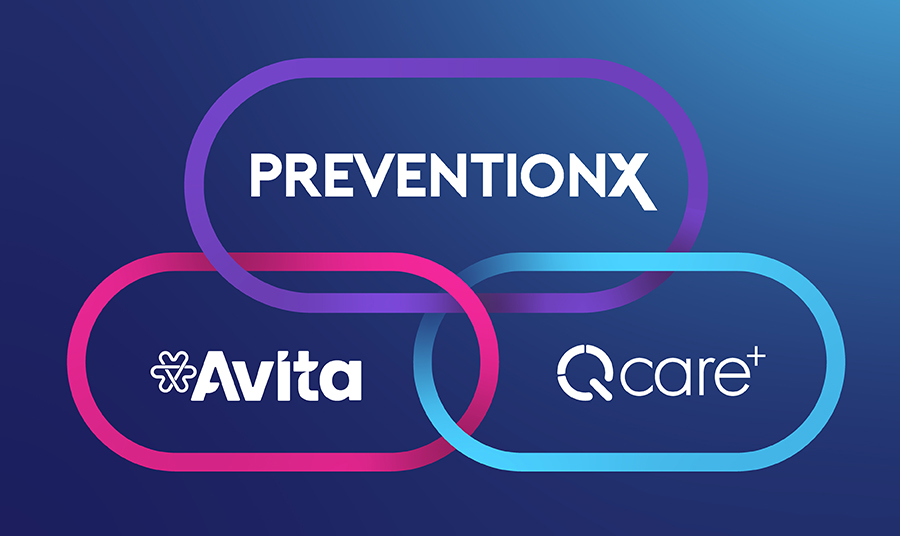Each year, tens of millions of Americans—folks from every walk of life—feel the impact of mental health challenges on their daily lives. One in five U.S. adults struggle with mental illness annually, a toll that, if left untreated, can set off a ripple effect of other concerns, including physical health disorders, substance use problems, family crises, unemployment, homelessness, and even suicide.
Yet while the United States spends more on healthcare per person than any other high-income nation, reports show that, averaging across all demographic groups, less than half of all U.S. adults with mental illness receive treatment. The reasons they suffer in silence are many: Self-inflicted and societal stigma plays a substantial role in keeping individuals with behavioral health issues from getting help. More than 10% of these individuals have no insurance coverage, and over 160 million Americans live in a Mental Health Care Health Professional Shortage Area.
Historically underserved communities are even less likely to receive behavioral healthcare, studies show. For example, only 36% of the Latinx community and under 40% of the Black community received treatment for mental illness, compared with 52.4% of the white population. Understanding the importance of integrated care, many of Avita’s covered entity partners offer marginalized patients a mental wellness safety net by providing comprehensive, compassionate, and inclusive behavioral health services.
But what’s the best way for covered entities to successfully engage and retain community members in mental health services, given an environment rife with obstacles in the patient journey? Read on as AvitaCare Atlanta Behavioral Health Consultant Caresse Davis, who cares for patients on behalf of Avita’s covered entity partner, MedCura Health, weighs in with provider advice from the front lines. And don’t miss the bonus set of tips for marketing your behavioral health services at the end of the article!
One in five U.S. adults struggle with mental illness annually, a toll that, if left untreated, can set off a ripple effect of other concerns, including physical health disorders, substance use problems, family crises, unemployment, homelessness, and even suicide.
Three ways covered entities can sustainably build their behavioral health programs
From a provider’s point of view, designing a behavioral health program that holistically fits into a clinic’s integrated care model involves communication, coordination, compassion, and cultural competency, Caresse says. Her top three tips for success:
1. Leverage integrated care to engage existing patients in behavioral health services:
When reaching community members needing mental health services, covered entities can start by building on their rapport with current patients. “Engaging existing clinic patients in mental health programs often starts with the patient having a positive experience with other areas of the clinic,” Caresse says. “Due to stigma, discrimination, and adverse belief systems, individuals need to feel emotionally safe before seeking help, and having an established, positive rapport with providers makes that transfer a lot easier.”
Integrated behavioral healthcare is a win-win for both patients and providers, she explains. “Patients are more open to integrated behavioral health because they feel better supported when their physical and mental health needs are addressed in the same facility,” Caresse says. “Clinic providers can better keep each other apprised of the patient’s whole health. For example, a primary care provider can send the behavioral health team a referral with a brief description of the patient’s needs for mental health services. In reverse, if a patient in the behavioral health program is experiencing a high-stress event that may affect their physical health, for example, their blood pressure, the behavioral health team can communicate that to the primary care provider.”
2. Build connections and prioritize timely communication to keep patients engaged:
Prioritizing clear, consistent communication—between therapist and patient or among the patient’s integrated care team—plays a pivotal role in patient retention. On the care team side, “keeping providers on the same page about a patient’s care allows us to collaborate and show up for patients as a team,” Caresse says. “Best practices include only referring to patients using their account numbers to maintain confidentiality and sharing pertinent information verbally or through an electronic health record (EHR) system immediately.”
On the therapist-to-patient level, “the more patients feel seen, heard, and supported, the more likely they are to consistently engage in behavioral health services,” she adds. “Meeting patients where they are now and using active listening skills enhances this process.” If a patient falls out of care, “I would process that first with the patient and then share feedback with their provider,” Caresse says. “But behavioral health services are voluntary and should never feel like a ‘task’ for patients. I empower them to tell me if they need a break from therapy or are ready to discharge.”
3. Create a stigma-free environment that puts a premium on multicultural competence to build patient relationships:
Designing a comfortable, inclusive environment where patients feel they’re receiving safe and personalized care is also key to retention in behavioral health programs. “At our Atlanta location, we have a bright, warm, and welcoming behavioral health room that our patients love and report feeling relaxed in,” Caresse says. “But it’s more than that. We also strive to present our patients with an emotionally secure environment and lead our sessions with compassion, empathy, and grace.”
Multicultural competence is also essential to providing exceptional services as a behavioral health clinician, Caresse says. “Showing up as authentic, asking genuine questions for understanding, and never making assumptions is how I tailor individualized services to patients,” she says.
Engaging existing clinic patients in mental health programs often starts with the patient having a positive experience with other areas of the clinic. Due to stigma, discrimination, and adverse belief systems, individuals need to feel emotionally safe before seeking help, and having an established, positive rapport with providers makes that transfer a lot easier.”
Caresse Davis
Behavioral Health Consultant, AvitaCare Atlanta
Marketing tips for promoting your covered entity’s behavioral health program
Whether your covered entity’s behavioral health program is in its infancy or well-established, getting the word out to the community about your services deserves a strategic marketing plan involving multiple stakeholders. Ed Roberts, senior director of marketing at AvitaCare Atlanta, offers this advice:
Ensure everyone’s on the same page:
From a marketing perspective, “every team member within a clinical setting must be aligned as it relates to all behavioral health messaging,” Ed says. “If there is any deviation, a patient will notice the inconsistency and potentially turn away from the help they sincerely need.”
Creating and delivering talking points infused with non-stigmatizing language, among other components, for each group the patient interacts with during their behavioral health journey is one step towards ensuring everyone is on message, he explains. “These talking points can then be used as a foundation to develop broader marketing campaigns that include messaging on your website and social media.”
Market behavioral health as part of a holistic wellness plan:
To effectively market a clinic that offers behavioral health services, “those specific offerings must not be perceived as the ‘walk-on player’ to a Varsity team,” Ed says. “When patients interact with your brand’s messaging on social media or in-clinic, they must sense the normalcy of behavioral health as being just as important as primary and specialty care.”
For example, behavioral health messages should share equal space on digital displays in waiting and exam rooms and on rack cards and posters throughout the clinic. “Seeing the unabashed normalcy of this information can be the catalyst for making patients feel seen, heard, and valued,” Ed explains.
Different patient demographics call for different messaging:
Remember Caresse’s point about multicultural competency earlier? It’s critically important to your marketing mix as well. “Developing a set of patient personas—fictional people created by researching data and interviewing individuals from specific audience segments—is a must-have in crafting messages that will resonate and differentiate your clinic within the marketplace,” Ed says.
Patient personas should consider age, education level, job, household income, family size, sexual orientation, technology proficiencies, and potential healthcare barriers. “For each persona, build a narrative that reveals cultural nuances, behaviors, perceptions, and values of that specific community,” Ed says. “Personas can uncover gaps in the patient journey, sparking improvements in your operational processes.”
Every team member within a clinical setting must be aligned as it relates to all behavioral health messaging. If there is any deviation, a patient will notice the inconsistency and potentially turn away from the help they sincerely need.
Ed Roberts
Senior Marketing Director, AvitaCare Atlanta

ABOUT CARESSE DAVIS, LPC
Caresse is a behavioral health consultant at AvitaCare Atlanta, where she cares for patients on behalf of Avita’s covered entity partner, MedCura Health. A Licensed Professional Counselor (LPC) with over 10 years of mental health and behavioral health experience, she works with children, adolescents, and adults across various clinical settings. Caresse operates from a theoretical orientation of cognitive behavioral therapy and leads with grace, compassion, and empathy. Caresse’s clinical specialties include anxiety, depression, major life adjustments, crisis intervention, trauma, and career counseling. She received her bachelor’s degree in psychology from Georgia Southern University and her master’s in mental health counseling from Mercer University.

ABOUT ED ROBERTS
Ed Roberts is the senior marketing director at AvitaCare Atlanta. With more than 15 years’ experience building major brands in the healthcare, energy, and government sectors, Ed knows how to develop and launch omnichannel campaigns. These campaign messages are built on a solid foundation of insights that advance organizational strategies, generate brand affinity, and increase market competitiveness.




